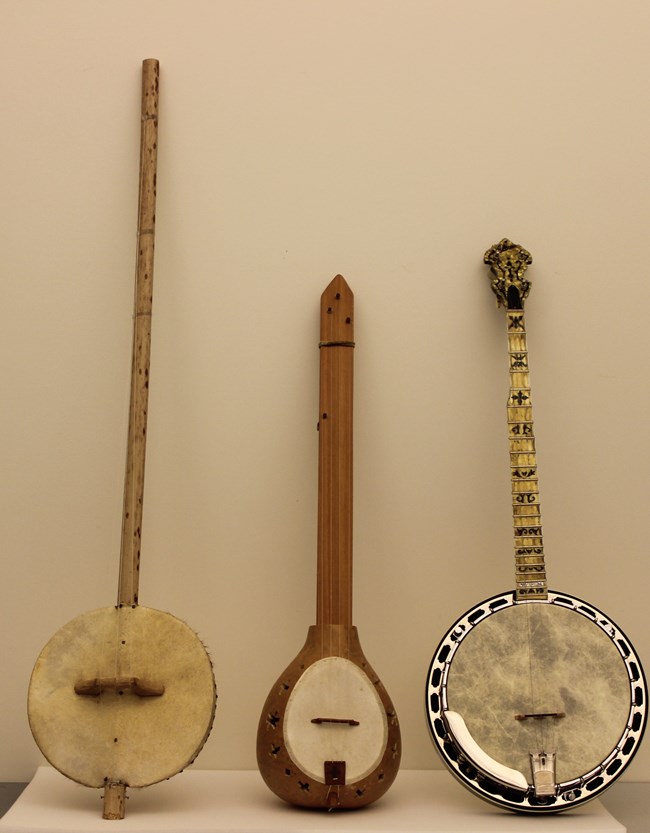
NPS collection. The banjo is an instrument with a storied history. While it is heavily associated with Appalachian bluegrass culture, its roots trace back much further. The first appearance of what is recognized today as the banjo is probably from several hundred years ago in Gambia, with the Jola people and the African instrument, the akonting. Still played today, the akonting is an instrument made from a gourd body and stretched out goatskin. During a folk music revival that spanned the mid-1900’s, led by people from around the Blue Ridge Mountains, such as Earl Scruggs, Cherokee Elder Walker Calhoun, Samantha Bumgarner, and Bill Monroe, the banjo became a solidified part of the folk music that is still central to Appalachian culture. Whether the style is claw hammer, drop thumb, or a lightning-fast Scruggs-style forward roll, the banjo has solidified its treasured place in the region’s musical history. There are still many practitioners of banjo traditions found today across the Blue Ridge region. From Saturday night concerts at the Blue Ridge Music Center, to community events and festivals in the communities adjacent to the Parkway, the sounds of the banjo ring out from the Blue Ridge Mountains.
|
Last updated: February 24, 2023
